Outsourcing dental implant production is a strategic decision that goes beyond simple cost-cutting. It’s about leveraging external expertise to unlock new capacity, reduce fixed overhead, and enhance the overall scalability of your practice. To select the right partner, you must conduct a comprehensive evaluation across several critical dimensions: from understanding the nuances of different OEM/ODM models and ensuring digital workflow compatibility to verifying global compliance standards (like ISO 13485) and establishing clear risk control protocols.
The ultimate goal is not just to find a vendor but to secure a reliable collaborator. A trusted overseas dental lab can provide predictable production continuity, transparent cost structures, and professional support through every step of the onboarding and ongoing collaboration process. By focusing on a holistic assessment of quality, reliability, and long-term value, you can build a resilient supply chain that supports your practice’s growth and ensures consistent, high-quality patient outcomes.
What are the differences between in-house and outsourced implant production?
When considering how to manage your dental implant cases, the first and most fundamental decision is whether to produce restorations in-house or outsource them to a specialized dental lab. This choice isn’t just about cost; it’s a strategic decision that affects your practice’s workflow, capacity, and long-term growth. While in-house production offers complete control, outsourcing to a trusted partner can unlock scalability and access to specialized expertise that is difficult to replicate internally.
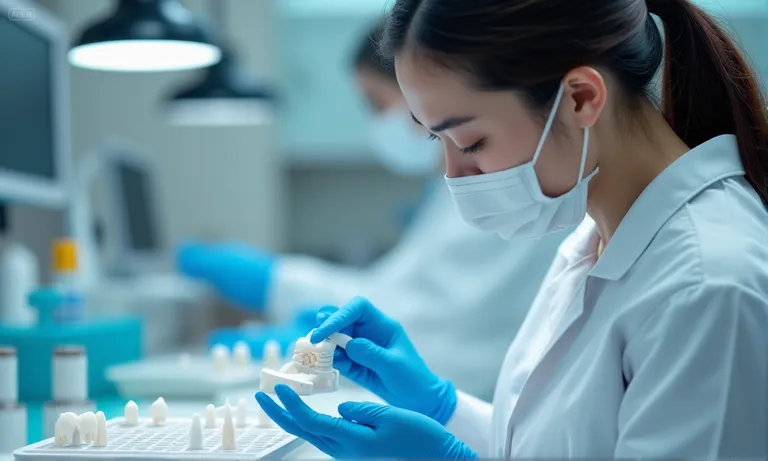
dental-lab-technician-inspecting-implant-restorations
What are the pros and cons of outsourcing vs. in-house manufacturing?
Here’s a breakdown of the key trade-offs between the two approaches. Understanding these factors is crucial for making an informed decision that aligns with your practice’s goals.
| Feature | In-house Manufacturing | Outsourcing to a Dental Lab |
| Initial Investment | High. Requires significant upfront capital for CAD/CAM equipment, milling machines, furnaces, and software licenses. | Low. Minimal to no upfront investment is needed. You only pay per case or a fixed service fee. |
| Operational Costs | High. Includes materials, maintenance, software updates, and salaries for trained technicians. | Variable. Costs are directly tied to case volume, making them predictable and flexible. |
| Control & Quality | Maximum control. You oversee every step, from design to milling and finishing, ensuring direct quality oversight. | Collaborative control. You manage the initial design and approval, while the lab handles production. Quality is a shared responsibility, relying on clear communication and a reliable lab’s quality assurance (QA) policies. |
| Expertise & Staffing | Requires dedicated, highly trained technicians. Finding and retaining talent can be challenging and expensive. | Access to specialized expertise. Labs employ a large team of technicians with diverse skills and access to advanced, specialized machinery. |
| Scalability & Capacity | Limited. Production capacity is capped by your equipment and technician availability. Scaling up for a high volume of cases can be slow and costly. | High. A professional lab can absorb large case volumes and handle sudden demand spikes, providing near-unlimited capacity. |
| Case & Material Range | Potentially limited to what your equipment and materials can produce. | Broad. Labs offer a wide array of materials and restoration types, from standard zirconia crowns to complex hybrid restorations. |
Export to Sheets
When does outsourcing provide better value than building internal capacity?
Outsourcing often provides better value when you’re facing one or more of these scenarios:
- You need to manage costs: Outsourcing shifts costs from fixed overhead to a variable, per-case model, which can be more budget-friendly for small to mid-sized practices.
- You want to scale quickly: If you’re experiencing rapid growth or an unexpected surge in implant cases, an overseas dental lab can provide the immediate capacity needed to meet demand without requiring capital expenditure.
- You require diverse expertise: Handling complex cases like full-arch restorations or specific abutment designs requires specialized skills. A lab provides access to a dedicated team with deep knowledge in these areas.
- You want to reduce operational burden: Managing equipment maintenance, material inventory, and technician training takes time and resources. Outsourcing allows you to focus on clinical work and patient care.
How do workflows and oversight differ across the two options?
The core difference in workflow is control and responsibility. With in-house production, your team manages the entire digital chain, from intraoral scanning to CAD design, and then the physical production (milling, sintering, finishing). This offers direct oversight at every stage.
When you outsource, the workflow becomes a collaborative loop. You send a digital file (STL, PLY) and a prescription form to the lab. The lab then takes over the CAD design, manufacturing, and quality control. For this model to succeed, clear communication and a well-defined Standard Operating Procedure (SOP) are crucial. As a global dental lab, we often collaborate with clients to establish a protocol for digital file submission and a consistent feedback loop to ensure designs meet their clinical standards. This cooperative approach ensures that even with a physical distance, the final product is exactly what the clinician needs. For example, some labs use project management platforms or client portals to track each case, which simplifies communication and approval processes, giving you the visibility you need without the hands-on burden.
In-house production is a great fit for practices prioritizing complete control and a high volume of relatively simple cases. However, outsourcing offers a flexible, cost-effective, and scalable solution for practices seeking to expand their service offerings, manage fluctuating workloads, and access a deeper pool of specialized expertise.
Understanding the full landscape of outsourcing starts with comparing it against in-house manufacturing. For a deeper side-by-side analysis of workflows, costs, and risk trade-offs, see [In-House vs Outsourcing: How to Choose for Dental Implant Manufacturing], which breaks down the decision in practical detail.
What outsourcing models exist for dental implant production?
When you decide to outsource your dental implant production, you’re not just choosing a lab—you’re choosing a collaboration model. These models define the level of control, customization, and partnership you’ll have with your lab. Understanding the differences between OEM, ODM, and white-label production is key to finding the right fit for your practice, ensuring the partnership aligns with your brand identity and operational needs.
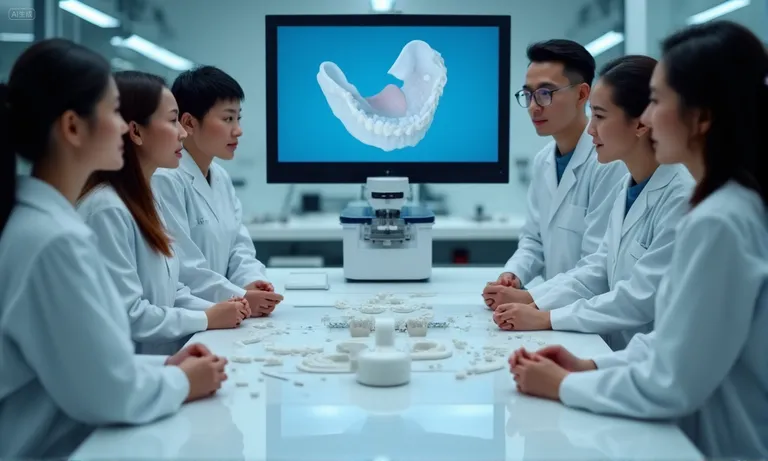
dental-lab-OEM-ODM-technicians
How do OEM, ODM, and white-label production models differ?
These three models represent different levels of a lab’s involvement in the design and manufacturing process. Choosing one impacts everything from your workflow to the final product you deliver.
| Model | OEM (Original Equipment Manufacturer) | ODM (Original Design Manufacturer) | White-Label Production |
| Lab’s Role | Manufactures a product based on your specific design and specifications. | Designs and manufactures a product that you then sell under your own brand. | Manufactures a generic, pre-designed product that you can brand and sell. |
| Customization | Full customization. You provide the CAD design, material specifications, and all critical details. The lab’s role is to produce exactly what you’ve designed. | Moderate customization. You choose from a range of existing lab designs, making minor adjustments to fit your needs. The core design is the lab’s IP. | Minimal customization. You purchase a finished, off-the-shelf product. The only customization is adding your logo or branding to the final restoration. |
| Best For | Practices or groups with their own in-house design capabilities and a need for precise, custom-designed restorations. | Practices that want a reliable product with a proven track record, but without the high costs of R&D and full design. | Resellers, distributors, or large DSOs looking for a cost-effective, ready-to-market solution that requires minimal effort. |
Export to Sheets
What levels of customization and control can each model offer?
The level of control you maintain is directly tied to the model you choose:
- OEM (High Control): With this model, your practice or in-house design team maintains complete control over the design and specifications. The lab acts as a production partner, executing your vision precisely. This requires a robust internal workflow and clear communication to ensure every detail, from emergence profile to margin fit, is handled correctly.
- ODM (Shared Control): In this scenario, you give up some design control in exchange for efficiency. You’re leveraging the lab’s R&D and existing portfolio of proven designs. This is a great middle ground for practices that don’t have the time or resources to design every case from scratch but still want a high-quality, customized product.
- White-Label (Minimal Control): This is the least demanding option. You get a reliable, standardized product at a competitive price. Your focus shifts entirely to marketing and distribution, as there’s no involvement in the design or manufacturing process.
Should you choose a local or overseas lab partner?
This decision goes beyond just proximity and cost. Local labs offer easier physical communication, face-to-face meetings, and potentially faster turnaround times for some cases. However, they often have higher overheads, which can lead to higher costs per unit.
Choosing an overseas dental lab can offer significant cost savings, but a successful partnership depends on a shared digital workflow. With advancements in scanning and CAD/CAM technology, the physical distance is less of a barrier than it used to be. For example, we worked with a clinic in Australia that was initially hesitant about the time difference. We set up a clear protocol where they would submit all their digital files at the end of their workday, and our technicians would complete the design and production during our business hours. By the time they started their next day, the work was already done, effectively creating a 24-hour production cycle. This type of collaboration, which is a key strength of global labs, can turn a potential challenge into a distinct advantage in terms of efficiency and turnaround time.
Ultimately, the right choice for your practice depends on your unique needs. Whether you prioritize total control, quick scalability, or cost-effectiveness, there’s a collaboration model and lab partner that can help you achieve your goals.
When evaluating outsourcing models, the distinction between OEM and ODM can shape everything from design control to compliance risk. For a focused comparison of these two approaches—and where white-label fits in—see [What Are the Key Differences Between OEM and ODM in Dental Implant Outsourcing?].
What technical and digital capabilities should an outsourcing lab offer?
When evaluating a potential dental lab, their technical and digital capabilities are just as important as their pricing. A lab’s ability to seamlessly integrate with your existing digital workflow is a non-negotiable factor for modern dental practices. A reliable partner should act as a natural extension of your clinic, not a bottleneck. This means having the right expertise, the latest equipment, and, most importantly, the ability to communicate fluently in the language of digital dentistry.
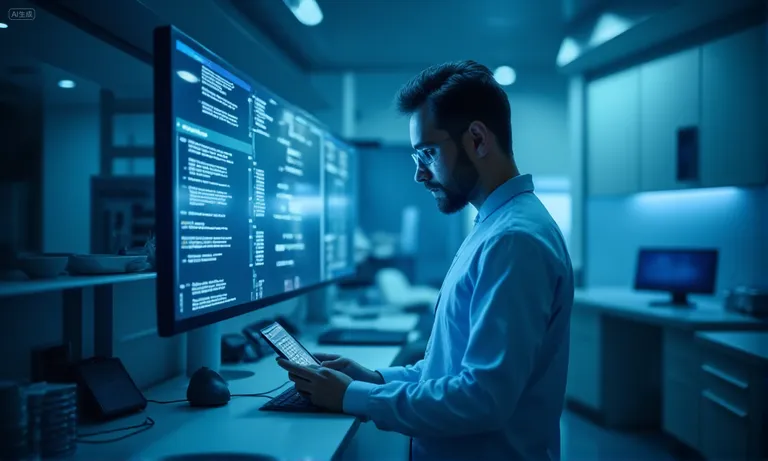
dental-lab-technician-3d-printing-implant-model
Does the lab support full-arch, screw-retained, and hybrid implant restorations?
A lab’s true value isn’t just in producing single crowns, but in its ability to handle complex implant cases with consistency and precision. You should confirm that your potential partner has a proven track record with these specific restoration types.
- Full-Arch Restorations: These cases are complex and require a deep understanding of occlusion, esthetics, and material science. A skilled lab should be able to deliver an anatomically correct horseshoe-shaped dental arch that fits perfectly on the patient’s jaw, ensuring both form and function.
- Screw-Retained Restorations: The precision of the screw channel and the emergence profile is critical for these restorations. The lab should demonstrate expertise in designing and producing parts that ensure a perfect fit with the abutment, minimizing chairside adjustments.
- Hybrid Restorations: These require a meticulous blend of different materials and a precise fit between the prosthesis and the substructure. The lab needs the technical skill to fabricate these components accurately and to handle the unique challenges of hybrid designs.
What digital file formats (STL, PLY) and software integrations are supported?
A lab’s digital compatibility is the foundation of a smooth collaboration. The wrong file format can lead to delays and remakes. A good global dental lab should be agnostic to your specific scanner or software, as long as it exports common file formats. The most crucial files are STL (the most common format, representing a 3D model as a mesh of triangles) and PLY (which stores 3D data with color and texture information, valuable for highly esthetic cases). Beyond these, inquire about their software ecosystem. Many labs are integrated with leading platforms like 3Shape, Medit, and Exocad, simplifying file submission and case management. This ensures that their systems can directly ingest the files from your practice, eliminating the need for conversions that can compromise data integrity.
Can the lab align with your CAD/CAM system and workflow requirements?
A key test of a lab’s capabilities is their willingness and ability to adapt to your specific workflow. It’s not about their system; it’s about how they can align with yours. This alignment ensures the digital handoff is seamless and efficient.
For instance, we once partnered with a large US-based DSO that used a specific, proprietary CAD/CAM system. Their previous lab partner had a rigid workflow that required them to convert files, leading to frequent errors and frustrating delays. To address this, our technical team conducted a full review of their system’s output and created a custom protocol to handle their unique file structures and submission process directly. This wasn’t just about software compatibility; it was about demonstrating our commitment to being a flexible and proactive partner. This level of collaborative problem-solving is what turns a simple vendor relationship into a true partnership, ensuring your workflow remains efficient and error-free.
Choosing a lab with robust digital capabilities and a flexible approach to collaboration means you can confidently handle a wider range of cases while maintaining high standards and a streamlined process.
How do quality and compliance standards impact outsourcing decisions?
Quality and compliance aren’t just buzzwords; they are the bedrock of a trusting partnership and the primary safeguards for your practice’s reputation. When outsourcing, especially to an overseas dental lab, validating a partner’s commitment to these standards is a critical step in risk management. A lab that invests in certifications and has clear quality assurance protocols is demonstrating a commitment to reliable, predictable outcomes.
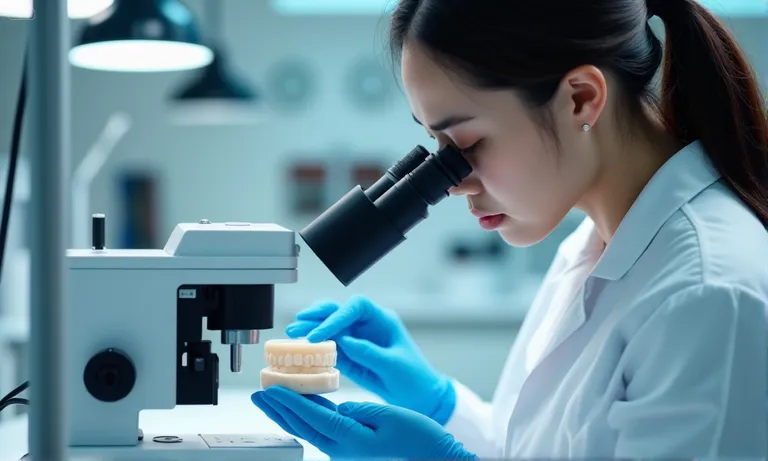
dental-lab-quality-control-technician-microscope
What does ISO 13485 / FDA / CE compliance mean for implant labs?
These certifications and registrations are not mere formalities; they are indicators of a lab’s adherence to international standards for medical device manufacturing. They signal a commitment to quality and safety that protects both your practice and your patients.
- ISO 13485: This is the international gold standard for a medical device quality management system. A lab with this certification has a robust system in place for everything from material tracking and production processes to documentation and risk management. It means their operations are systematic and auditable, ensuring consistent quality.
- FDA Registration: For labs serving the U.S. market, FDA registration is a legal requirement. It confirms the lab is registered with the U.S. Food and Drug Administration and complies with their regulations for dental devices. It’s a foundational assurance that the lab is operating legally and transparently in the U.S. market.
- CE Marking: The CE mark signifies that a product conforms with health, safety, and environmental protection standards within the European Economic Area (EEA). For labs shipping to Europe, this marking is a legal necessity, guaranteeing the restorations meet stringent European standards.
How do outsourcing labs handle quality control and remake policies?
A lab’s true quality is revealed not just when things go right, but when they go wrong. A strong quality control (QC) process should be multi-layered, from the initial digital design check to a final physical inspection. An effective remake policy isn’t about just accepting a return; it’s about a proactive, root-cause analysis.
We once partnered with a clinic in the UK that had an issue with the margin on a PFM case. The clinician was concerned, and instead of just issuing a remake, we requested detailed photos and an in-depth explanation of the clinical issue. Our QC team reviewed the photos and cross-referenced them with the original digital file, identifying a minor discrepancy in the digital margin line that had gone unnoticed. We took full responsibility, not only remaking the case for free but also updating our internal QC protocol to add an extra layer of digital margin verification. This experience showed the client that we weren’t just a production facility; we were a collaborator dedicated to continuous improvement and preventing future errors. This kind of transparent, problem-solving approach is what builds real trust.
What documentation or audits should be requested before trial orders?
Before placing a trial order, you should request specific documentation to verify the lab’s claims and mitigate risk. This due diligence ensures you’re partnering with a lab that’s both professional and transparent.
- Request a copy of their certifications: Ask to see their current ISO 13485, FDA, and/or CE certificates. Check the validity dates and the issuing body.
- Inquire about their material suppliers: A reputable lab should be able to provide documentation on the origin of their materials, from zirconia blocks to porcelain powders, ensuring they come from trusted sources.
- Ask for their detailed remake policy: Get a clear, written policy on what constitutes a remake, who covers the costs, and the process for submitting a case for review.
- Discuss their QC process: Request a flowchart or written description of their QC steps, from initial digital scan analysis to final physical inspection and packing.
By focusing on a lab’s quality and compliance standards, you’re not just buying a product—you’re securing a partnership based on reliability, professionalism, and a shared commitment to patient safety.
How does outsourcing support scalability and continuity in your implant business?
A thriving dental practice or DSO often faces a paradox: success brings more cases, but also strains on internal capacity. Outsourcing isn’t just a cost-cutting measure; it’s a strategic tool for managing growth and ensuring business continuity. By partnering with a reliable dental lab, you gain a flexible resource that can expand and contract with your needs, turning what would be a logistical headache into a seamless process.
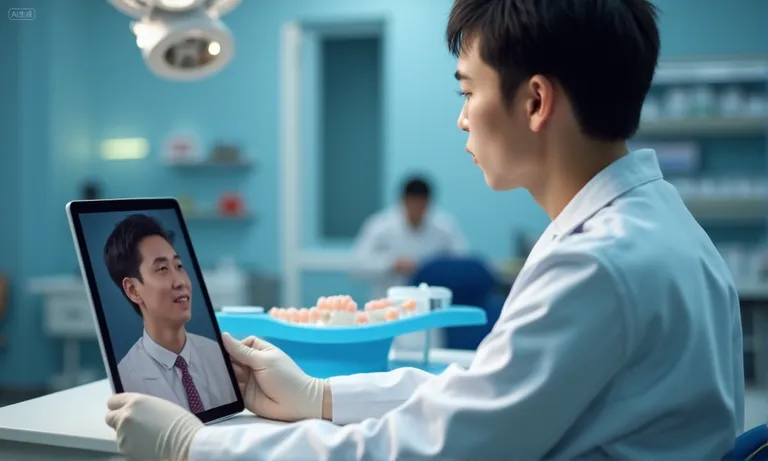
dental-lab-technicians-collaborating-with-dentist-on-tablet
How can external labs absorb sudden case volume increases?
One of the most significant advantages of an outsourcing partner is their ability to absorb a sudden surge in demand. For an in-house lab, a spike in case volume can lead to longer turnaround times, technician burnout, and a potential dip in quality as staff rush to meet deadlines. A professional dental lab, on the other hand, operates with a built-in reserve of capacity. They have multiple milling machines, furnaces, and a large team of technicians who can be allocated to specific projects. This allows you to handle an influx of cases without any capital investment, ensuring your practice can grow without being limited by its physical production capabilities.
What happens during internal staffing shortages or technician turnover?
Staffing is a major pain point for many dental practices and DSOs. When a key technician leaves or takes an extended leave, your entire in-house production can grind to a halt. This creates immediate backlogs, affects patient timelines, and adds significant stress to your team. Outsourcing provides an instant and reliable buffer against this. A trusted lab partner ensures that even if your internal team is short-staffed, your cases will continue to be processed and delivered on time. This provides crucial business continuity, allowing you to focus on clinical excellence and patient care without worrying about staffing gaps.
How to ensure production continuity across fluctuating workloads?
Fluctuating workloads are a reality for many practices—some months are busy, others are slow. Outsourcing helps you manage these ebbs and flows effectively. Instead of a fixed internal overhead (salaries, equipment maintenance) that’s costly during slow periods, you pay a variable cost per case. This model makes your operations more agile and cost-effective. A dental lab partner with a strong logistics network and a streamlined process can act as a consistent resource, regardless of your case volume.
For instance, we once worked with a large US-based DSO whose in-house lab struggled to manage seasonal spikes. Their workflow was rigid, and every holiday season they’d fall weeks behind, leading to patient dissatisfaction. We set up a tiered partnership where, during their peak season, they could instantly divert overflow cases to us. Our established workflows and redundant systems meant we could handle their additional volume without a hitch. This gave them the flexibility they needed to meet patient demand year-round and allowed their in-house team to focus on core work, showcasing the power of a collaborative, scalable partnership.
By leveraging a lab’s capacity and operational flexibility, you can build a more resilient and scalable business, ready to meet any challenge.
What are the key risks in overseas outsourcing—and how to manage them?
While an overseas dental lab offers significant advantages, it also introduces a new set of risks. These aren’t insurmountable, but they require proactive management. The most common concerns revolve around regulatory compliance, material transparency, and logistical delays. A successful partnership with an international lab isn’t about avoiding these risks entirely, but about having a clear strategy to mitigate them.
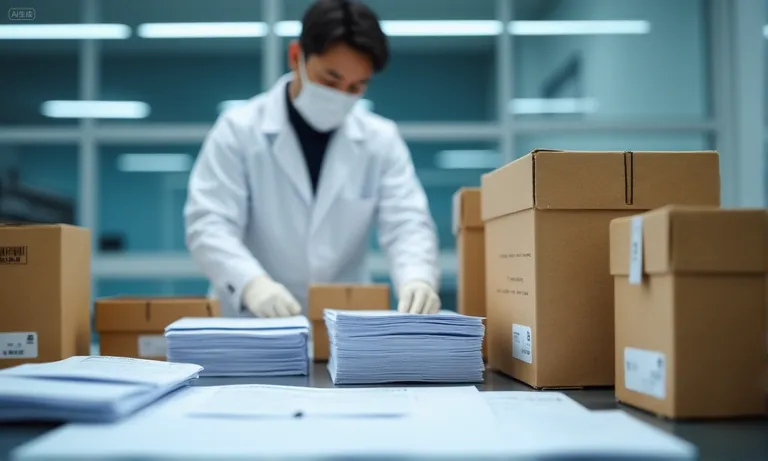
dental-lab-shipping-boxes-customs-documents
What regulatory or legal risks differ between regions?
The biggest legal risk in cross-border dental work comes from differing regulatory bodies. A lab that operates solely within one country might not be familiar with the regulations of another. For instance, dental devices intended for the U.S. market must be registered with the FDA, and those for the European market must have CE marking. A lab that understands and complies with these differing requirements is essential. This is more than just a certificate; it’s a commitment to a transparent and traceable manufacturing process that aligns with your local standards, protecting both you and your patients from legal exposure.
How to prevent quality issues from unclear material origins?
The quality of a restoration starts with the quality of the raw materials. One of the primary risks of outsourcing is a lack of transparency regarding material sourcing, which can lead to unpredictable outcomes and compromised patient safety. To mitigate this, a reputable lab should be able to provide you with a Material Safety Data Sheet (MSDS) and a Certificate of Analysis (CoA) for every product.
- Ask for material verification: The lab should confirm they use materials from well-known manufacturers like Ivoclar Vivadent or VITA, and provide proof of purchase or a lot number for the materials used in your specific cases.
- Verify material traceability: A transparent lab can trace every restoration back to its original material batch. This traceability is crucial for managing recalls or investigating quality issues.
- Confirm FDA-cleared or CE-marked materials: Ensure that the materials themselves are certified for use in your region, not just the finished product. This dual layer of compliance provides an extra measure of confidence.
What contract terms help mitigate shipping, remake, or customs delays?
When we started working with a new distributor in Canada, their main concern was predictability. Their previous lab partner had unpredictable customs delays and an unclear remake policy, which often led to frustrated clients. To solve this, our contract included specific clauses addressing these issues. First, we clearly defined our remake policy, including a promise to expedite remakes at our cost if the fault was ours. Second, we established a proactive communication protocol. We’d send an alert when a package was shipped, provide real-time tracking, and have a dedicated contact person ready to troubleshoot any customs issues. This transparency, along with predefined terms for handling logistics issues, helped build the distributor’s confidence in our ability to deliver consistently. It’s a classic example of how a well-structured partnership agreement and open communication can turn potential risks into manageable challenges.
Managing these risks is about moving from a transactional relationship to a collaborative one, where both parties are committed to a transparent, documented, and proactive process.
How to evaluate pricing models and long-term value from outsourcing?
Pricing is often the first thing people look at, but a low unit price doesn’t always equal the best value. The real cost of a partnership with an overseas dental lab includes more than just the sticker price. It involves understanding different pricing models, accounting for hidden costs, and, most importantly, evaluating the long-term return on investment (ROI) compared to your internal overhead.
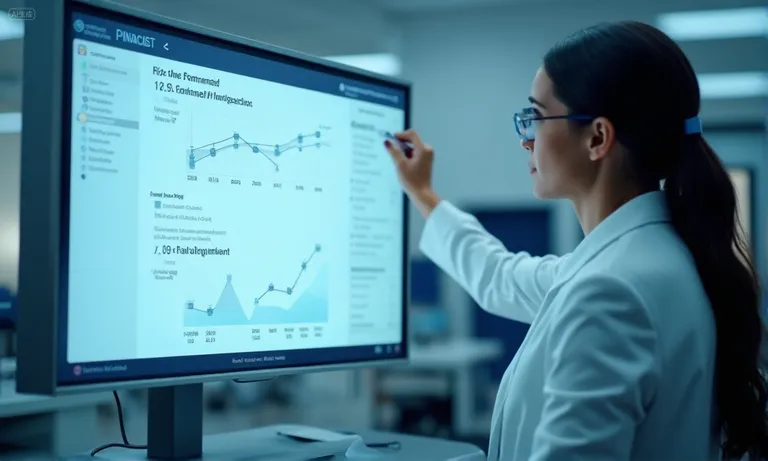
dental-lab-pricing-roi-financial-graphs
What pricing models (per unit, per arch) are commonly offered?
Most labs offer straightforward pricing models, but understanding the details is key.
- Per-Unit Pricing: This is the most common and transparent model. You are charged a fixed price for each restoration, such as a single crown or a bridge unit. This model is easy to budget for and allows you to directly compare costs across different labs.
- Per-Arch Pricing: This model is typically used for complex cases like full-arch implant restorations. You are charged a single, all-inclusive price for the entire arch, regardless of the number of individual units. This simplifies quoting for complex cases and provides cost certainty.
The best model for you depends on your case mix. If your practice primarily handles single-unit crowns, per-unit pricing is ideal. If you specialize in full-mouth reconstructions, a per-arch model may offer more clarity and efficiency.
What hidden costs (remakes, rush, logistics) should be considered?
A price list can be misleading if it doesn’t account for all potential costs. Here are the most common hidden costs you need to consider:
- Remake Costs: A lab with a very low price but a high remake rate can quickly become expensive. A good partner will have a transparent remake policy, often covering the cost of a remake if the error is on their end.
- Rush Fees: If you have an urgent case, a lab might charge a premium for expedited production. Confirm these fees upfront, and check if your lab partner has the capacity to handle rush orders without a significant upcharge.
- Logistics & Customs Fees: When working with an overseas dental lab, you should clarify who is responsible for shipping costs, customs duties, and taxes. A partner that handles all these logistics and provides clear tracking can save you a lot of time and unexpected fees.
How to compare outsourcing ROI vs. internal fixed overhead?
Comparing a lab’s pricing to your in-house costs requires a careful look at more than just the price per unit. You need to perform a comprehensive ROI calculation that includes all fixed and variable costs.
To illustrate, consider a mid-sized clinic with an in-house lab. Their fixed overhead (equipment, salaries, rent) is, let’s say, $10,000 per month, regardless of case volume. Their average cost per case is $200. If their case volume is low, their actual cost per case skyrockets. By contrast, an outsourcing model has a variable cost per case, with no fixed overhead. The ROI comes from freeing up capital and reducing the financial risk of fluctuating case volumes. A partnership with a dependable Chinese dental lab can convert your fixed overhead into a flexible, predictable expense, allowing you to re-invest capital into practice growth or patient care. It’s a strategic shift that puts your cash flow to work more efficiently.
Ultimately, the best value isn’t the lowest price; it’s a balanced equation of price, quality, reliability, and risk mitigation that delivers the greatest long-term benefit to your practice.
What onboarding steps and collaboration practices lead to successful outsourcing?
You’ve done the research, evaluated the options, and selected a lab partner. Now, the final and most crucial step is to set up a collaboration process that ensures long-term success. The initial onboarding period is where a theoretical partnership becomes a practical reality. Establishing clear workflows and communication protocols from the start can prevent future misunderstandings, reduce remakes, and build a foundation of trust.
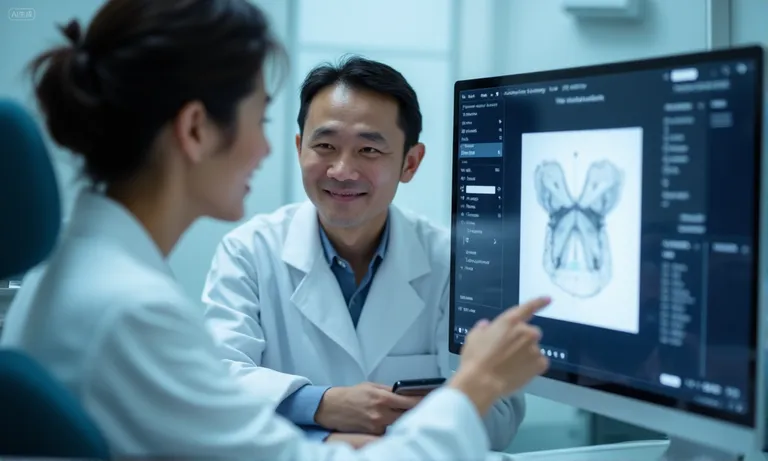
dental-lab-dentist-video-call-onboarding
What test case process helps validate new outsourcing labs?
Before committing to a long-term partnership, a test case process is essential. It’s your opportunity to evaluate the lab’s performance in a real-world scenario. A good test case process should be structured to validate the lab’s core capabilities.
- Start with a standard case: Choose a straightforward case that you handle frequently, such as a single zirconia crown. This will allow you to assess the lab’s baseline quality and consistency without the complications of a complex case.
- Include a challenging element: To test their problem-solving skills, add a small challenge. This could be a difficult margin line or a specific aesthetic request.
- Evaluate communication and turnaround: Pay close attention to how the lab communicates throughout the process. Do they provide updates? Is the communication clear and timely? Is the turnaround time consistent with their promise?
- Assess fit and finishing: Once the restoration arrives, evaluate its fit, margin integrity, and aesthetics. A reliable lab should deliver a product that requires minimal to no chairside adjustments.
How to set up clear communication and approval workflows?
Clear communication is the lifeblood of a successful outsourcing partnership. Without it, even the most skilled labs can make mistakes. Setting up a predictable workflow ensures everyone is on the same page.
- Designate a single point of contact: Having a dedicated case manager at the lab streamlines communication and prevents miscommunication.
- Define your approval process: Decide upfront how you want to approve designs. This could be a quick email confirmation or a more formal review on a cloud-based platform.
- Set expectations for response times: Establish clear expectations for how quickly the lab should respond to your inquiries and design revisions.
What file submission formats and SOPs enable smooth coordination?
The digital handoff is a critical moment. A smooth process depends on both the lab’s and your team’s adherence to clear standards. As a modern global dental lab, we’ve found that defining a standard operating procedure (SOP) for file submission is crucial. This document outlines the exact file formats needed, the required case information (patient ID, material, shade), and the preferred method of submission. For example, a DSO might require that all scans are uploaded to a specific cloud folder with a standardized naming convention. By aligning on these details, you eliminate common errors and ensure every case starts on the right foot, making the entire process more efficient for both sides.
A successful partnership is built on mutual understanding and a shared commitment to a smooth, predictable process. By following these onboarding steps, you can transition from simply outsourcing to truly collaborating with a trusted partner.
Conclusion
Successfully evaluating outsourcing options for implant production goes beyond just comparing prices. It’s about finding a partner that offers long-term value through its technical expertise, rigorous quality control, and proactive collaboration. By understanding the different models, managing risks, and implementing a structured onboarding process, you can build a resilient supply chain that supports your practice’s growth and ensures consistent, high-quality outcomes. A reliable overseas dental lab should serve not as a simple vendor, but as a strategic ally, helping you expand your capabilities, manage costs, and navigate the complexities of modern digital dentistry.


